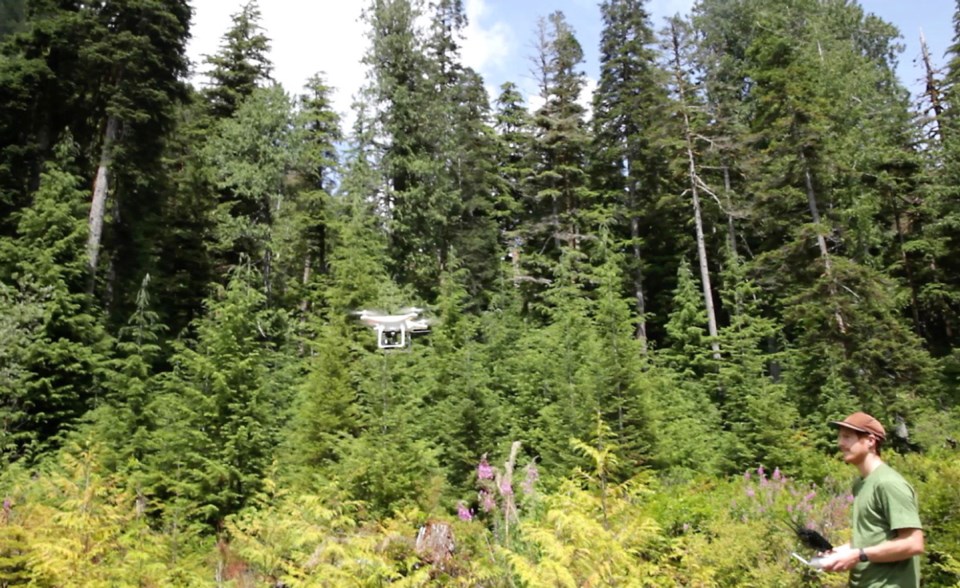A remotely piloted aircraft has shone new light on an old-growth forest near Port Renfrew that has been approved for logging by the B.C. government.
The advent of technology has given photographer TJ Watt of the Ancient Forest Alliance, a grassroots environmental organization headquartered in Victoria, a wealth of insight into the scope of the Central Walbran ancient forest.
“It allows us to explore and document areas that were essentially impossible to reach before,” Watt said.
“There is a whole other world within the forest that, when you’re stuck on the ground, you don’t get a chance to view. But using the drone to fly upward in the canopy, we’re able to provide a new perspective on the scale of these massive trees.”
Watt released a video on YouTube this week to protest a recent decision by the provincial government that gives Teal-Jones Group, a Surrey-based logging company, permission to log a 32-hectare area for pulp, paper and solid wood products.
Rick Jeffery, president and CEO of Coast Forest Products, an industry association and advocate for the coastal forest industry, said there is no reason for the public to think the area captured on video will disappear entirely.
“[The Ancient Forest Alliance] is in there flying a drone around, and that’s lovely,” Jeffrey said.
“We’re in there with boots on the ground for hours and hours and days and days, spending the time to make sure that the development is consistent with the land-use plan and isn’t risking or threatening the values that our friends in the Forest Alliance are saying they are trying to protect.”
In fact, the Walbran “really isn’t at risk,” Jeffery said. “The development there will be small clearcuts that mimic the range of natural variation that you would find in an old-growth forest. Areas get blown over, slides happen and the new forest grows up in that small patch. That’s essentially what [Teal-Jones] is doing.”
Watt captured the video on a GoPro Hero 4 camera affixed to a drone aircraft flown remotely. He was able to capture in a few hours footage that would have taken him days to acquire had he hiked around on foot. That “new tool in the toolbox” will be an important asset of environmental organizations hoping to stop further logging the area, Watt said.
“Any footage of the canopy within the forest before would have had to be done with tree climbers and pulleys. It would be a really complicated process. Outside of the forest, when you’re separated from a hillside at risk of logging by a 500-foot ravine, you’re now able fly to the other side no problem and be back and packed in our vehicle in under 30 minutes.”
His video shows an impressive western red cedar that has been named Leaning Tower Cedar, for its similarity to Italy’s Leaning Tower of Pisa. The tree is located in the Black Diamond Grove area of the valley near Port Renfrew, a contested parcel of land that was approved for logging by the B.C. government. It is the first of eight proposed cutblocks.
Teal-Jones is legally required to manage at-risk species in wildlife habitat areas that crews come across, Jeffery said, so the plan doesn’t pose a risk to the ecosystems in the Upper Walbran or the Walbran Valley itself.
“There is absolutely nothing aggressive about these plans. We don’t just willy-nilly draw lines on a map and say we are going to go harvesting there.”
Watt is aware that video images may not change provincial government policy. However, he remains hopeful they can sway the public.
“The [video’s] greatest use is to get thousands of people interested in the cause. But social media and whatnot could pressure the government, who makes the ultimate decision of whether the forest and the Walbran stand or fall.”
The video can be viewed at timescolonist.com.



